
The Enigmatic Choquequirao Trek: Peru's Hidden Gem
Discover the Choquequirao Trek: A hidden Incan wonder in Peru, offering breathtaking landscapes, rich history, and an unforgettable adventure off the beaten path.
The Choquequirao Trek is one of Peru's most enchanting journeys, offering a unique blend of history, nature, and adventure. Nestled in the lush Andes mountains, Choquequirao, often referred to as the 'sister city' of Machu Picchu, remains a lesser-known but equally magnificent Incan site. This remote archaeological wonder is accessible only by foot, making the trek a delightful challenge for avid hikers and history enthusiasts alike. The journey to Choquequirao takes you through diverse landscapes, from verdant cloud forests to rugged mountain passes. Along the way, you'll encounter stunning vistas, cascading waterfalls, and a variety of flora and fauna. The trek is a perfect escape from the more crowded tourist routes, offering a tranquil and immersive experience into Peru's natural beauty. Upon reaching Choquequirao, visitors are greeted with breathtaking views of ancient terraces, ceremonial plazas, and intricate stone carvings. The site is still under excavation, adding to its mysterious allure. Wandering through the ruins, you can almost hear the whispers of the past, imagining the lives of the Incas who once inhabited this sacred place.
Local tips in Choquequirao Trek
- Start your trek early in the morning to avoid the midday heat and ensure ample time for rest breaks.
- Bring plenty of water and high-energy snacks to stay hydrated and fueled during the hike.
- Hire a local guide to enrich your experience with insights about the history and natural surroundings.
- Pack layers of clothing to adapt to the changing weather conditions in the Andes.
- Consider acclimatizing in Cusco or another high-altitude city before starting the trek to prevent altitude sickness.
The Enigmatic Choquequirao Trek: Peru's Hidden Gem
The Choquequirao Trek is one of Peru's most enchanting journeys, offering a unique blend of history, nature, and adventure. Nestled in the lush Andes mountains, Choquequirao, often referred to as the 'sister city' of Machu Picchu, remains a lesser-known but equally magnificent Incan site. This remote archaeological wonder is accessible only by foot, making the trek a delightful challenge for avid hikers and history enthusiasts alike. The journey to Choquequirao takes you through diverse landscapes, from verdant cloud forests to rugged mountain passes. Along the way, you'll encounter stunning vistas, cascading waterfalls, and a variety of flora and fauna. The trek is a perfect escape from the more crowded tourist routes, offering a tranquil and immersive experience into Peru's natural beauty. Upon reaching Choquequirao, visitors are greeted with breathtaking views of ancient terraces, ceremonial plazas, and intricate stone carvings. The site is still under excavation, adding to its mysterious allure. Wandering through the ruins, you can almost hear the whispers of the past, imagining the lives of the Incas who once inhabited this sacred place.
When is the best time to go to Choquequirao Trek?
Iconic landmarks you can’t miss
Historic Sanctuary of Machu Picchu
Discover the mystical ruins of Machu Picchu, a UNESCO World Heritage site, where ancient Inca civilization meets breathtaking Andean beauty.

Saqsaywaman
Explore Saqsaywaman, an ancient Incan fortress in Cusco, renowned for its impressive stonework and rich cultural heritage.

Plaza Regocijo
Discover the vibrant essence of Cusco at Plaza Regocijo, a stunning city park filled with history, culture, and local charm.

Archaeological Park Tipón
Explore the breathtaking Archaeological Park Tipón, where Incan history meets stunning Andean landscapes in a captivating national park.
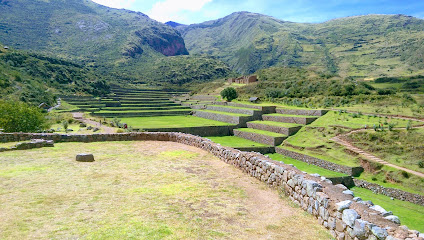
Sun Gate
Discover the breathtaking views from Sun Gate, the iconic entrance to Machu Picchu, where history and nature unite in the Andes Mountains.

Temple of the Moon
Discover the ancient spiritual heart of the Incas at the breathtaking Temple of the Moon in Cusco, Peru, surrounded by stunning Andean landscapes.

Choquequirao Archaeological Park
Explore Choquequirao Archaeological Park, a breathtaking Incan site in the Andes, offering stunning landscapes and rich cultural heritage.

Intipata
Uncover the ancient agricultural marvels of Intipata amidst the stunning Andes, a must-visit on the Inca Trail experience.

Pumamarca Ruins
Unveil the mysteries of the Inca civilization at Pumamarca Ruins, a breathtaking historical landmark in the heart of Peru's Andes.

Juchuy Coscco
Discover the serene beauty and rich history of Juchuy Coscco, a captivating tourist attraction nestled in the stunning Peruvian Andes.

Puyupatamarca
Explore Puyupatamarca, an awe-inspiring Incan site rich in history and surrounded by breathtaking views, perfect for adventurers and culture enthusiasts.

Tierras Vivas
Explore the majestic beauty of Cusco with Tierras Vivas, your expert guide to adventure sports, hiking, and bird watching in the stunning Andes.

Inca Trail
Discover the breathtaking Inca Trail, a historic trek through stunning landscapes leading to the majestic Machu Picchu in Peru.

Inkilltambo
Discover the serene beauty and rich history of Inkilltambo, an archaeological site that reveals the ancient Incan civilization amidst stunning natural landscapes.

Inca Trail to Machu Picchu
Explore the iconic Inca Trail leading to Machu Picchu, where history and breathtaking nature intertwine for an unforgettable trekking experience.

Unmissable attractions to see
Historic Sanctuary of Machu Picchu
Experience the wonders of Machu Picchu, a breathtaking historical site in Peru, rich in history and stunning natural beauty.

Sun Gate
Experience breathtaking views and explore the ancient Incan heritage at the stunning Sun Gate, the gateway to Machu Picchu.

Valley of the Goblins
Discover the enchanting Valley of the Goblins in Peru, where nature's artistry creates a surreal landscape filled with whimsical rock formations.
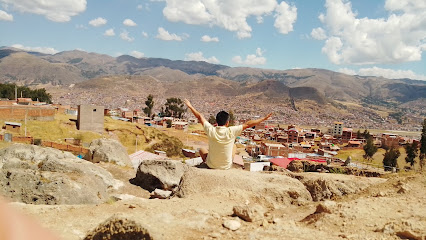
Puerta Del Sol
Discover the breathtaking views and vibrant culture of Cusco at Puerta Del Sol, the city's iconic observation deck and tourist attraction.

Calle Loreto
Discover the charm of Calle Loreto, a historical street in Cusco filled with colonial architecture, local culture, and captivating landmarks.

HUACA DE PACHACUTEQ
Explore the ancient wonders of Huaca de Pachacutec in Cusco, Peru - a must-see archaeological site rich in Inca history and breathtaking views.

Inca Trail
Explore the majestic Inca Trail, a breathtaking hike through stunning landscapes and ancient ruins leading to the iconic Machu Picchu.

K'allachaka
Explore K'allachaka in Cusco, Peru: a stunning tourist attraction offering breathtaking landscapes, cultural insights, and unforgettable trekking experiences.

San Blas Waterfall and caves
Experience the breathtaking beauty of San Blas Waterfall and Caves, a natural wonder in Cusco, Peru, perfect for adventure and tranquility.

Choquequirao Trail
Discover the breathtaking Choquequirao Trail, where adventure meets history in the heart of Peru's stunning Andes mountains.

Qochapata
Explore Qochapata, an archaeological wonder in Cusco, Peru, where stunning terraces and Incan history await your discovery.

CAÑON DEL APURIMAC
Experience the breathtaking beauty and rich biodiversity of CAÑON DEL APURIMAC, a perfect blend of adventure and culture in the heart of Peru.

Wakapunku
Discover Wakapunku, the Gateway to the Inca Trail in Cusco, where breathtaking views and rich history await every traveler.

Huayna Picchu
Experience the breathtaking views and historical wonders of Huayna Picchu, a must-visit mountain for all adventurers exploring Machu Picchu.

Huaca Cheqtaqaqa
Explore the enchanting Huaca Cheqtaqaqa, an archaeological marvel in Cusco, Peru, where ancient Incan history and stunning landscapes come together.

Essential places to dine
Pachapapa
Discover authentic Peruvian cuisine at Pachapapa in Cusco – where every dish is a celebration of local flavors and culinary heritage.

Organika Restaurant
Experience authentic Peruvian flavors at Organika Restaurant in Cusco—where fresh ingredients meet culinary artistry.

Mapacho Craft Beer Restaurant
Experience the rich flavors of Peru at Mapacho Craft Beer Restaurant with exquisite cuisine and locally brewed craft beers in Cusco.
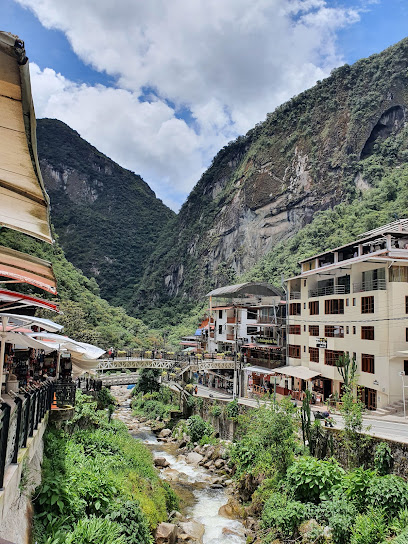
Chullos Restaurant & Craft Beer
Experience authentic Peruvian flavors at Chullos Restaurant & Craft Beer in Aguas Calientes – where tradition meets modern dining.
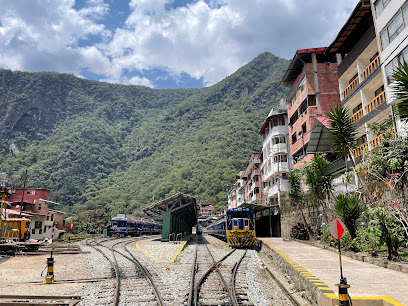
Yaku Restaurant
Experience exquisite Peruvian cuisine at Yaku Restaurant in Cusco - where tradition meets innovation in every dish.

Chicha por Gaston Acurio
Experience authentic Peruvian cuisine at Chicha por Gaston Acurio, where tradition meets innovation in a vibrant setting.
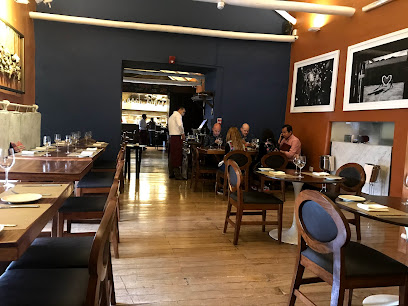
KUSYKAY Peruvian Craft Food
Experience authentic Peruvian flavors at KUSYKAY in Cusco—where tradition meets modern craft in every delicious dish.

Uchu Peruvian Steakhouse
Discover authentic Peruvian cuisine at Uchu Peruvian Steakhouse in Cusco - where tradition meets innovation in every bite.

Restaurant Bistro Bar Indio Feliz
Experience authentic Peruvian cuisine at Bistro Bar Indio Feliz in Aguas Calientes – where flavor meets breathtaking views.
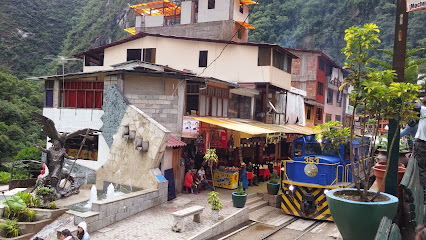
Inka Grill
Experience authentic Peruvian cuisine at Inka Grill in Cusco – where tradition meets taste in every delightful dish.

Ponchos Machupicchu Restaurant
Experience authentic Peruvian flavors at Ponchos Machupicchu Restaurant in Aguas Calientes – your gateway to delicious cuisine near Machu Picchu.

Inkazuela
Indulge in exquisite Peruvian cuisine at Inkazuela, where tradition meets innovation in every dish.

Chull's - Peruvian Cuisine & Craft Beer
Experience authentic Peruvian cuisine and craft beer at Chull's in Cusco - where tradition meets flavor.

Toto's House
Experience authentic Peruvian cuisine at Toto's House in Aguas Calientes – where every meal is a celebration of local flavors.

SUMAQCHA RESTAURANT
Discover authentic Peruvian cuisine at Sumaqcha Restaurant in Cusco's historic Plaza de Armas - a culinary delight amidst stunning views.

Markets, malls and hidden boutiques
Mercado Central de San Pedro
Discover the heart of Cusco at Mercado Central de San Pedro - a vibrant market filled with local delights, crafts, and culture.

Handicraft Center Cusco
Explore the Handicraft Center Cusco, where Peruvian artistry comes alive with unique handmade treasures and cultural richness.
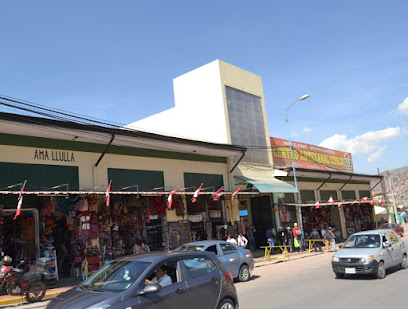
Choquequirao Archaeological Park
Explore Choquequirao Archaeological Park, a stunning Incan site nestled in the Andes, offering breathtaking views and rich history for all adventure seekers.

Speedy Gonzalo Camping Equipment
Your adventure begins here: Quality camping gear and expert advice at Speedy Gonzalo Camping Equipment in Cusco.

EKEKOS SAN BLAS -art & COLORS
Explore vibrant Peruvian art and handcrafted souvenirs at EKEKOS SAN BLAS, a cultural gem in the heart of Cusco.

Machu Choquequirao
Explore the enchanting Machu Choquequirao, a hidden Incan treasure in the Andes, offering breathtaking views and rich history.

Choquequirao Trail Shops
Discover unique local crafts and essential gear at Choquequirao Trail Shops, your gateway to the stunning Choquequirao trek in Cachora, Peru.

Choquequirao Trail
Discover the breathtaking Choquequirao Trail in Peru, a stunning hike leading to the ancient Inca ruins surrounded by magnificent Andean landscapes.

Rummy Outdoor
Discover stylish outdoor apparel and gear at Rummy Outdoor in the heart of Cusco, your gateway to adventure in the Andes.

Artesanias Intichay
Explore authentic Peruvian textiles at Artesanias Intichay in Pisac, where vibrant craftsmanship meets rich cultural heritage.

Choquequirao Trek Peru
Explore the breathtaking Choquequirao Trek with expert guides, uncovering ancient Incan ruins in the stunning Peruvian Andes.
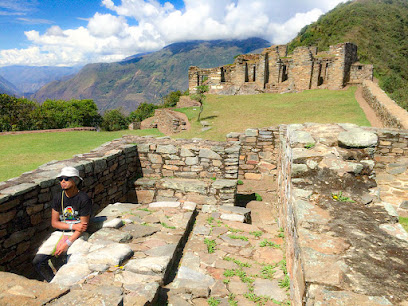
Choquequirao Expeditions
Embark on an unforgettable adventure with Choquequirao Expeditions, exploring the majestic Andes and ancient Incan ruins in the heart of Peru.

Choquequirao exploring
Explore the breathtaking beauty and rich history of Choquequirao, the lesser-known treasure of the Incan empire nestled in the Peruvian Andes.

Choquequirao Trek Operator
Experience the breathtaking Choquequirao trek with Cusco's premier travel agency for an unforgettable adventure in Peru's stunning Andes.

Peru Choquequirao Trek
Embark on an unforgettable adventure through Peru's stunning Choquequirao Trek, where Incan history meets breathtaking landscapes.

Essential bars & hidden hideouts
LIMBUS RESTOBAR
Discover culinary delights and breathtaking views at LIMBUS RESTOBAR, a vibrant dining experience in the heart of Cusco.

Republica Del Pisco - Cusco
Experience the authentic taste of Peru at Republica Del Pisco, Cusco's premier destination for delectable cuisine and refreshing drinks.

Mapacho Craft Beer Restaurant
Experience the vibrant flavors of Peru at Mapacho Craft Beer Restaurant, where traditional cuisine meets artisanal brewing in the heart of Cusco.

Chicha por Gaston Acurio
Experience the essence of Peruvian cuisine at Chicha por Gaston Acurio in the heart of Cusco's historic Plaza Regocijo.

La chupiteria the shot bar
Discover the lively ambiance and unique shots at La Chupiteria, Cusco's favorite shot bar for locals and tourists alike.

Km 0
Discover the vibrant flavors of Peru at Km 0, a must-visit grill restaurant in the heart of Cusco's historic district.

Chango Club Cusco
Experience the vibrant nightlife of Cusco at Chango Club, where music, culture, and fun come together in an unforgettable atmosphere.

Rock House Cafe
Experience the vibrant nightlife and delicious gastropub cuisine at Rock House Cafe, a top destination in Cusco's historic center.

Black Cat Bar Cusco - Craft Cocktails & Spirits
Discover the spirit of Cusco at Black Cat Bar, where craft cocktails and a lively atmosphere create unforgettable nights in the heart of the city.

CalienTE - Teteria, Macerados y Tapas
Discover a unique blend of teas and exquisite tapas at CalienTE - Teteria in Cusco, where vibrant flavors meet a cozy atmosphere.

MANDALA MAGISTERIO
Experience the vibrant essence of Cusco at Mandala Magisterio, where exceptional dining meets lively karaoke entertainment.

PERUCHO Restaurant Craft Beer
Discover PERUCHO Restaurant in Cusco for a delightful fusion of craft beer and authentic Peruvian cuisine, perfect for every traveler.

Inka Happiness Cultural Bar
Experience the flavors and culture of Peru at Inka Happiness Cultural Bar in Aguas Calientes, a perfect spot for food and fun!

K'intuchay
Discover K'intuchay, a vibrant gastropub in Cusco blending traditional Peruvian flavors with modern culinary techniques for a unique dining experience.

Cervecería Del Valle Sagrado - Taproom Quispicanchis
Experience the vibrant flavors of Cusco at Cervecería Del Valle Sagrado, a brewpub offering craft beer and local cuisine in a lively atmosphere.

Local Phrases about Choquequirao Trek
-
- HelloKausay
[Kow-sigh] - GoodbyeAllinllachu
[A-yin-ya-chu] - YesArí
[Ah-ree] - NoManan
[Ma-nan] - Please/You're welcomeSulpayki
[Sool-pai-kee] - Thank youSulpay
[Sool-pie] - Excuse me/SorryPiedade
[Pee-eh-dah-deh] - How are you?Ima kachkanki?
[Ee-ma kach-kan-kee] - Fine. And you?Allin. Suti?
[A-yin. Soo-tee] - Do you speak English?Inglis simikunanki?
[Ing-lees see-mee-koo-nan-kee] - I don't understandManammi yachaychu
[Ma-nam-mee yah-chai-chu]
- HelloKausay
-
- I'd like to see the menu, pleaseMenuyta qawaykuychi, sulpayki
[Men-oo-ee-ta ka-wai-kooi-chee, sool-pie-kee] - I don't eat meatKarnirqa mikhuy
[Kar-nee-rka meek-way] - Cheers!Kanpai!
[Kan-pie] - I would like to pay, pleaseHarqunkichi, sulpayki
[Har-koon-kee-chee, sool-pai-kee]
- I'd like to see the menu, pleaseMenuyta qawaykuychi, sulpayki
-
- Help!Yanapanachiy!
[Yah-na-pa-na-chee] - Go away!Llaqta
[Yak-ta] - Call the Police!Puliñata llamanki!
[Poo-lee-nyaa-ta yam-an-kee] - Call a doctor!Yachachiq llamanki!
[Yah-cha-cheek yam-an-kee] - I'm lostUqayku
[Oo-kai-koo] - I'm illManan kani
[Ma-nan ka-nee]
- Help!Yanapanachiy!
-
- I'd like to buy...Imarunakuy...
[Ee-ma-roo-na-kooi] - I'm just lookingRikurikuchkan
[Ree-koo-ree-kooch-kan] - How much is it?Ima suyayki?
[Ee-ma soo-yai-kee] - That's too expensiveKaykunapura
[Kai-koo-na-poo-ra] - Can you lower the price?Suyayta kichayki?
[Soo-yai-ta kee-chai-kee]
- I'd like to buy...Imarunakuy...
-
- What time is it?Maypi ñawin?
[My-pee nyaa-ween] - It's one o'clockJujuy
[Hoo-hooi] - Half past (10)Iskay y media
[Iss-kai ee me-dee-a] - MorningPunchaw
[Poon-chow] - AfternoonInti chaski
[In-tee chas-kee] - EveningTuta
[Too-ta] - YesterdayQayna
[Kai-na] - TodayKuyay
[Koo-yai] - TomorrowKachun
[Kach-oon] - 1Huk
[Hoo-k] - 2Iskay
[Iss-kai] - 3Kinsa
[Keen-sa] - 4Tawa
[Ta-wa] - 5Pichqa
[Peech-ka] - 6Soqta
[Sok-ta] - 7Qanchis
[Kan-chees] - 8Pusaq
[Poo-sak] - 9Isqun
[Iss-koon] - 10Chunka
[Choon-ka]
- What time is it?Maypi ñawin?
-
- Where's a/the...?Maypi...
[My-pee] - What's the address?Maypi sutiyki?
[My-pee soo-tee-kee] - Can you show me (on the map)?Mapawan rikunanki?
[Map-a-wan ree-koo-nan-kee] - When's the next (bus)?Qamri...
[Kam-ree] - A ticket (to ....)Tikiti (....manta)
[Tee-kee-tee (manta)]
- Where's a/the...?Maypi...
History of Choquequirao Trek
-
Choquequirao, often referred to as the 'sister city' of Machu Picchu, was constructed by the Inca civilization in the 15th century. It served as an important cultural and religious center, strategically located on the edge of the Andes. The site showcases the sophisticated engineering and architectural prowess of the Inca, with its terraced fields, ceremonial plazas, and intricate stonework.
-
The ninth Inca emperor, Pachacuti, is believed to have commissioned the construction of Choquequirao. Under his rule, the Inca Empire expanded significantly, and Choquequirao was part of his grand vision to consolidate power and demonstrate Inca ingenuity. The city’s layout and construction techniques reflect Pachacuti's influence and his emphasis on integrating natural landscapes with urban development.
-
During the Spanish conquest of the Inca Empire in the 16th century, Choquequirao played a crucial role as a refuge for Inca resistance. Many Inca nobles and warriors retreated to this remote site to escape the Spanish forces. The difficult terrain and strategic location made it a formidable stronghold for the Incas during this tumultuous period.
-
Despite its historical significance, Choquequirao remained largely unknown to the outside world until the 18th and 19th centuries. European explorers and historians began documenting the site, but it wasn't until the 20th century that significant archaeological efforts were made to uncover and restore it. The Peruvian government and international archaeologists have worked together to study and preserve Choquequirao, revealing its rich history and cultural legacy.
-
Today, Choquequirao is a symbol of Inca heritage and resilience. Though less visited than Machu Picchu, it offers a more secluded and immersive experience for trekkers and history enthusiasts. The trek to Choquequirao is challenging, taking visitors through diverse ecosystems and breathtaking landscapes, allowing them to connect deeply with the region's natural beauty and historical context.
Choquequirao Trek Essentials
-
Choquequirao is located in the Vilcabamba mountain range in the Cusco region of Peru. The nearest city with an airport is Cusco, which is well-connected to Lima and other major cities by frequent flights. From Cusco, you can take a bus or taxi to the town of Cachora, the starting point for the Choquequirao Trek. The journey from Cusco to Cachora typically takes around 4 to 5 hours by road.
-
Once you reach Cachora, the only way to get to Choquequirao is by trekking. The trek usually takes 4 to 5 days round trip. You can hire a local guide and muleteers to assist with carrying your gear. In Cusco and other cities, taxis, buses, and colectivos (shared vans) are common means of transportation. Renting a car is also an option, but be prepared for challenging road conditions.
-
The official currency in Peru is the Peruvian Sol (PEN). While credit cards are accepted in larger cities like Cusco, it is advisable to carry cash for your trek, as ATMs are not available in remote areas like Choquequirao. Make sure to withdraw sufficient cash before leaving Cusco. Local vendors along the trek usually accept only cash.
-
Choquequirao is generally safe for tourists, but standard precautions should be taken. Ensure you are physically prepared for the demanding trek. Avoid trekking alone and always stay on marked paths. Petty theft can occur in crowded areas of Cusco, so keep an eye on your belongings. There are no specific high-crime areas targeting tourists in Choquequirao, but being vigilant is always advisable.
-
In case of emergency during your trek, contact your guide immediately. It is advisable to carry a satellite phone, as mobile coverage is limited. For emergencies in Cusco, dial 105 for police assistance and 116 for medical emergencies. Always have travel insurance that covers trekking activities and medical evacuations. Pharmacies and medical facilities are available in Cusco.
-
Fashion: Do wear comfortable and durable trekking gear, including good hiking boots. Avoid wearing flashy or expensive jewelry. Religion: Do respect local customs and traditions, especially when visiting religious sites in Cusco. Public Transport: Do be patient and polite. Don't be loud or disruptive. Greetings: Do greet people with a friendly 'Hola' or 'Buenos días.' A handshake is also common. Eating & Drinking: Do try local dishes and coca tea, which helps with altitude sickness. Don't drink tap water; always use purified or bottled water.
-
To experience Choquequirao like a local, consider hiring a local Andean guide who can share insights about the history and culture of the area. Engage with locals in the small villages along the trek and try traditional foods. Don't miss the sunset at the Choquequirao ruins; the view is breathtaking. Also, take your time to acclimatize in Cusco before starting the trek to avoid altitude sickness.
Trending Landmarks in Choquequirao Trek
Nearby Cities to Choquequirao Trek
-
Things To Do in Cusco
-
Things To Do in Ayacucho
-
Things To Do in Huancayo
-
Things To Do in Ica
-
Things To Do in Arequipa
-
Things To Do in Puno
-
Things To Do in Lima
-
Things To Do in Copacabana
-
Things To Do in Tacna
-
Things To Do in La Paz
-
Things To Do in Arica
-
Things To Do in Huaraz
-
Things To Do in Iquique
-
Things To Do in Cochabamba
-
Things To Do in Trujillo







